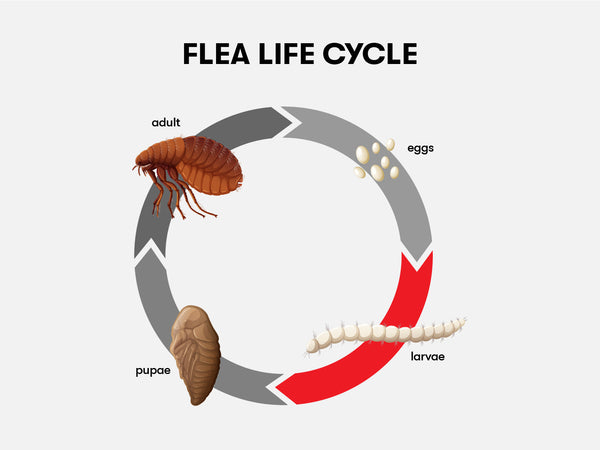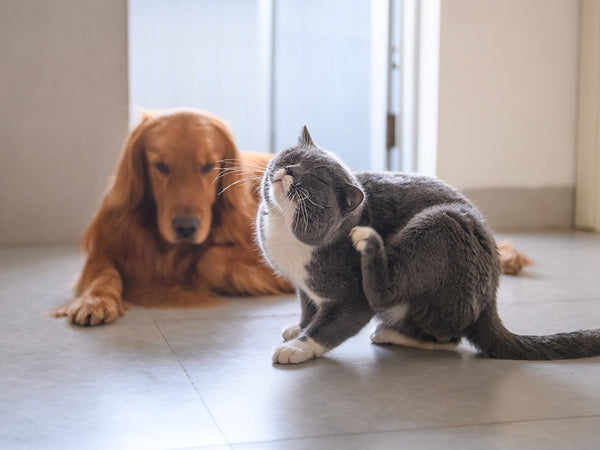How Antioxidants Influence Pet Health: New Research on Indirect Antioxidants
Written by: Dr. Jean Hofve, Holistic Veterinarian, DVM
We all know what antioxidants are, right? Most of us have at least heard the term, and many of us know that vitamins C and E are antioxidants. But really what is an antioxidant? How do they work? Why can certain antioxidants help our dogs and cats so dramatically? Antioxidants are very actively studied by contemporary health researchers, and knowledge about these valuable health-enhancers is growing steadily. Many more natural sources of antioxidants (described in detail below) are being found. Further, the mechanisms by which they assist the body’s functioning are being explored, shedding light on both the direct and indirect ways antioxidants have an impact on our and our pets’ overall health.
What are antioxidants?
Antioxidants are substances that can prevent excess oxidation of molecules. They can fight free radicals that develop in your dog or cat through absorbing toxins in their environment, or even just through the process of digesting food, or even exercising. Some antioxidants work directly to prevent excess oxidation. Many of the better known antioxidants fall into this group, including Vitamins A, C, and E, and Beta Carotene. Other antioxidants can work indirectly by encouraging the body of a cat or dog to be healthier. These indirect antioxidants work by a process called hormesis and can be much more powerful and beneficial. Hormesis is a relatively new way of understanding how antioxidants in fruits, vegetables and herbs work, which is addressed in more detail below.
What is a free radical?
A free radical is a molecule that has an extra electron. This extra electron can make a molecule interact with other molecules in a potentially damaging manner. Not all free radicals are bad. Some are essential for a cat’s or dog’s body to function correctly. But too much of certain types of free radicals can cause permanent damage to your pet on a cellular level. And our pets’ bodies, like ours, have the ability to produce more free radicals than what the body can handle. Damage from free radicals is highly associated with all age-related diseases like cancer, stroke, heart disease, type II diabetes and joint problems. It is thought that if you can limit damage from free radicals in your cat and dog then you can lessen the chance that they get these age-related diseases.
What is hormesis?
Hormesis is a process where a weak stressor is introduced to your dog and cat and in turn makes their bodies work in a healthier manner. A simple way to understand hormesis is to think of exercise. If you play fetch with your dog, those sprints to the ball create a mild stress that over time, with repeated sessions, increases your dog’s endurance, fitness and general health. Antioxidants that work via hormesis introduce weak stressors to your cat’s or dog’s system that in turn make them healthier. The key is dose. Low doses are usually best, and that is why it is best to buy supplement formulations that are specific to pets. It is now thought that most fruits, vegetables and herbs work their magic on our pets through hormesis. Our pets have molecular “bodyguards” built into their body systems. The reason why exercise and some fruits, vegetables and herbs can help their health is because hormesis helps increase the functioning of these bodyguards. When stimulated they can increase endogenous antioxidants (those found naturally within your dog or cat), and they in turn fight free radicals. There are a host of other bodyguard functions that are stimulated through hormesis, like detoxifying processes and membrane stabilization that all end up making your pet healthier and less likely to get serious diseases.What are the antioxidants that work via hormesis? Here is a list of a few of the fruits, vegetables, herbs and antioxidant compounds that work through hormesis:
- Ashwagandha – Sometimes referred to as Indian Ginseng, this ancient Ayurvedic herb has been used for thousands of years in India, It has an incredibly large number of health-nourishing compounds, including withanolides, which act through hormesis to lower the chances of getting cancer. They also have anti-inflammatory and neuroprotective properties.
- Bacopa – Another Ayurvedic medicinal herb used for thousands of years in India, bacopa contains flavonols, a host of bacopasaponins and alkaloids that act as a neuroprotective agents, dramatically increases endogenous antioxidants, especially catalase. Increased catalase can improve physical endurance, has a tendency to lower anxiety. It is strongly associated with longevity, have mitochondrial membrane stabilizing properties, and anti-epileptic qualities.
- Blueberry – Filled with beneficial anthocyanins and phytochemicals, blueberries may lower the risk of various cancers, reduce inflammation, and slow cognitive decline through neurogenesis and neuroprotection.
- Bilberry - A close relative of blueberries, these fruits contain considerably more anthocyanins than blueberries and appear to lower the chances of getting macular degeneration. Bilberry, has anti-cancer activity and helps support heart health.
- Broccoli – The compound sulforaphane found in broccoli activates proteins that increases endogenous antioxidants and detoxifiers. It has demonstrated strong anti-cancer activity, and is believed to have immune boosting properties.
- Green Tea – Green tea contains a potent number of antioxidants, including the incredibly powerful flavonols epicatechin and EGCG that act through hormesis to help with energy, aid the immune system, lower the chance of cancer, heart disease and type II diabetes.
- Milk Thistle – The flavonols in milk thistle increase endogenous antioxidants, can help prevent cancer, and aid in liver function and detoxification processes.
- Quercetin – A powerful flavonol that is found in a variety of fruits and vegetables, quercetin has shown anti-cancer qualities, has potent anti-inflammatory activity, helps conserve Vitamin C, and helps relieve allergic symptoms.
- Resveratrol – This health-buidling compound has been made famous by red wine. It activates specific sirtuin proteins that increase endogenous antioxidants and can help prevent cancer and type II diabetes.
- Turmeric root (curcumin) – Curcumin has strong anti-inflammatory effects and activates proteins that increase endogenous antioxidants and detoxifiers. It also helps prevent some of the aging effects on cognition through neuroprotection and demonstrates strong anti-cancer activities – again all from the effects of hormesis.
When considering an antioxidant supplement to support your pet’s health, look for a quality supplement that is expressly made for pets. These will have the right dosages and will include only ingredients that are safe for pets to ingest. One must remember that although there is a similarity between our pets and us, there are also some profound differences.
For example, chocolate contains flavonols like epicatechin that work wonders in us, but a compound it contains, theobromine, is metabolized in dogs much more slowly and can be toxic to them.While some standard pet antioxidant formulas still are made up primarily of Vitamins A, C, and E, a good diet should include plenty of these key vitamins, so consider an antioxidant formula that includes at least some indirect-acting antioxidants like those listed above to maximize the health benefits offered by these supplements. Healthy aging in ourselves and our pets is no accident, and while genetics play a profound role, the food and supplements we give to our pets play a large part in determining how well they will age.



















